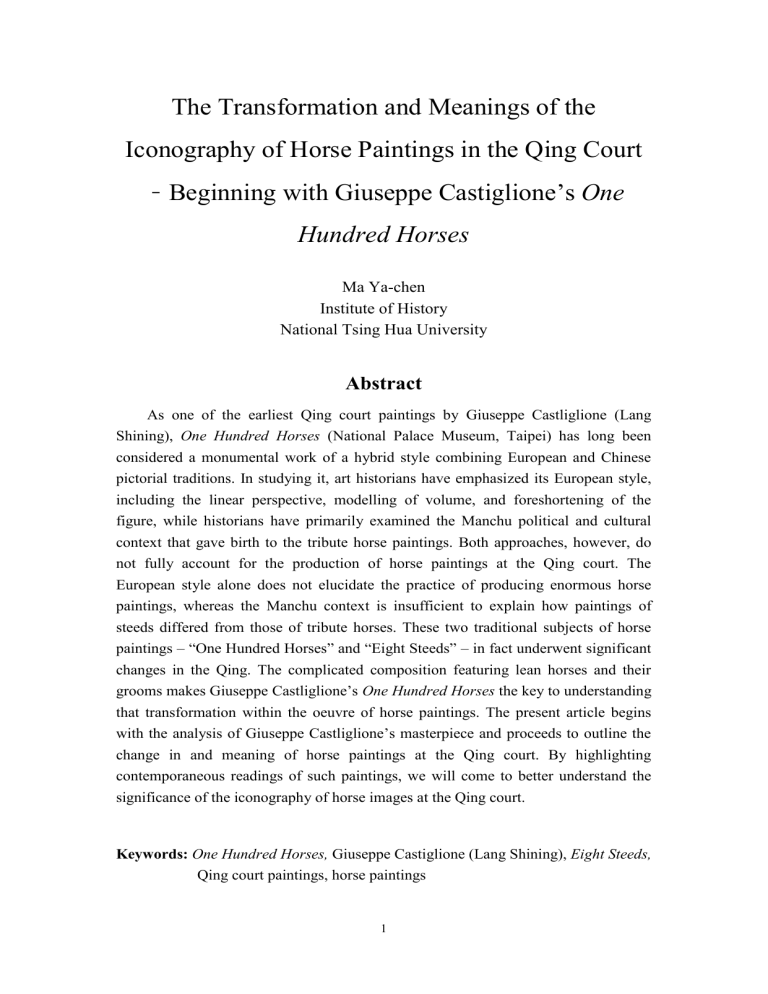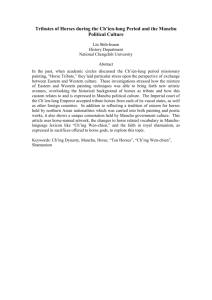The Transformation and Meanings of the Iconography of Horse

The Transformation and Meanings of the
Iconography of Horse Paintings in the Qing Court
-
Beginning with Giuseppe Castiglione’s One
Hundred Horses
Ma Ya-chen
Institute of History
National Tsing Hua University
Abstract
As one of the earliest Qing court paintings by Giuseppe Castliglione (Lang
Shining), One Hundred Horses (National Palace Museum, Taipei) has long been considered a monumental work of a hybrid style combining European and Chinese pictorial traditions. In studying it, art historians have emphasized its European style, including the linear perspective, modelling of volume, and foreshortening of the figure, while historians have primarily examined the Manchu political and cultural context that gave birth to the tribute horse paintings. Both approaches, however, do not fully account for the production of horse paintings at the Qing court. The
European style alone does not elucidate the practice of producing enormous horse paintings, whereas the Manchu context is insufficient to explain how paintings of steeds differed from those of tribute horses. These two traditional subjects of horse paintings – “One Hundred Horses” and “Eight Steeds” – in fact underwent significant changes in the Qing. The complicated composition featuring lean horses and their grooms makes Giuseppe Castliglione’s One Hundred Horses the key to understanding that transformation within the oeuvre of horse paintings. The present article begins with the analysis of Giuseppe Castliglione’s masterpiece and proceeds to outline the change in and meaning of horse paintings at the Qing court. By highlighting contemporaneous readings of such paintings, we will come to better understand the significance of the iconography of horse images at the Qing court.
Keywords: One Hundred Horses, Giuseppe Castiglione (Lang Shining), Eight Steeds,
Qing court paintings, horse paintings
1









